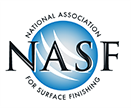Proposed Legislation to Regulate PFAS Under Clean Water Act – Including Surface Finishing
Legislation was reintroduced on June 1, 2021 that would require EPA regulation of PFAS under the Clean Water Act.
Share
Legislation to require EPA to regulate PFAS under the Clean Water Act was reintroduced on June 1, 2021 in both the Senate and the House to regulate discharges of PFAS from nine industry sectors, including electroplating and metal finishing, along with organic chemicals; plastics and synthetic fibers; pulp, paper and paperboard; textile mills; leather tanning and finishing; paint formulating; electrical and electrical components; and plastics molding and forming. The measure would also require water quality criteria to be finalized by a date certain.
EPA currently does not regulate PFAS discharges under the Clean Water Act, but is undertaking an effort to identify industrial sources that may warrant further study for potential regulation of PFAS through national effluent limitation guidelines. NASF has continued to work closely with EPA on informing the agency’s decisions on new regulation.
The bill would also authorize $200 million annually in grants to aid implementation by publicly owned treatment works (POTWs). The bill would mandate EPA to develop CWA water quality criteria for all measurable PFAS or PFAS classes within two years, and develop effluent limitations guidelines and standards for the same within four years, the release says. This would include setting pretreatment standards to block PFAS from entering publicly owned water treatment facilities.
Kirsten Gillibrand (D-NY) is spearheading the bill, the Clean Water Standards for PFAS Act, in the Senate, while Chris Pappas (D-NH) Pappas and Antonio Delgado (D-NY) are leading the push for the legislation in the House. Representative Pappas says he is working to build consensus on the legislation with Republicans and Democrats and will try to move it ahead. He notes that the bill “is already a bipartisan effort,” and that its “outlines” are included in Representative Debbie Dingell’s (D-MI) bipartisan comprehensive PFAS Action Act, introduced earlier this year.
Pappas says while the bill’s sponsors are encouraged by EPA Administrator Michael Regan’s commitment to addressing PFAS, “we need to hold the EPA’s feet to the fire and encourage them to act with speed while also making sure that our [POTWs] have the resources they need so that the costs do not get downshifted to local ratepayers.”
And Gillibrand in the release said, “By developing effluent limitations guidelines and clear standards for all measurable PFAS, we can stop PFAS at the source and prevent contamination of our drinking water.”
The bill is drawing support from the Environmental Working Group (EWG), an environmental group that has long been at the forefront on the push for regulation of PFAS. EWG notes that while PFAS have been identified in drinking water supplied to more than 2,300 communities, thousands of manufacturers are still legally allowed to discharge the chemicals into water. According to EWG attorney Melanie Benesh, “[t]o address the PFAS contamination crisis, we need to turn off the tap of PFAS pollution.”
As we noted, NASF has been working collaboratively with EPA officials on its evaluation of the effluent limitation guidelines for metal finishing for several years and has shared available data. This proposed legislation could prompt further action from EPA even if it does not become law. NASF remains fully engaged in the issue and will be discussing this legislation with decision makers as well as providing updates to NASF members. If you have any questions regarding the proposed legislation, please contact Jeff Hannapel with NASF at jhannapel@thepolicygroup.com.

This update is courtesy of the National Association for Surface Finishing (NASF). For more information or to become a member, visit nasf.org.
Related Content
OSHA, DOT and EPA Penalties Increase for 2023
The Department of Labor to revise civil penalty amounts for employer OSHA violations.
Read MoreLiquid Chrome Vs. Chromic Acid Flake
Contemplating how to continue offering chromic acid services in an increasingly stringent regulatory world? Liquid chrome products may be the solution you’re looking for.
Read MoreHow to Maximize Nickel Plating Performance
The advantages of boric acid-free nickel plating include allowing manufacturers who utilize nickel plating to keep up the ever-changing regulatory policies and support sustainability efforts.
Read MoreCalifornia Public Hearing to Decide Fate of Hex Chrome Plating and Anodizing
Metal Finishing Association of California urges all members of the metal finishing community to submit comments prior to the hearing.
Read MoreRead Next
Education Bringing Cleaning to Machining
Debuting new speakers and cleaning technology content during this half-day workshop co-located with IMTS 2024.
Read MoreDelivering Increased Benefits to Greenhouse Films
Baystar's Borstar technology is helping customers deliver better, more reliable production methods to greenhouse agriculture.
Read MoreMasking Solutions for Medical Applications
According to Custom Fabricating and Supplies, a cleanroom is ideal for converting, die cutting, laminating, slitting, packaging and assembly of medical-grade products.
Read More
























